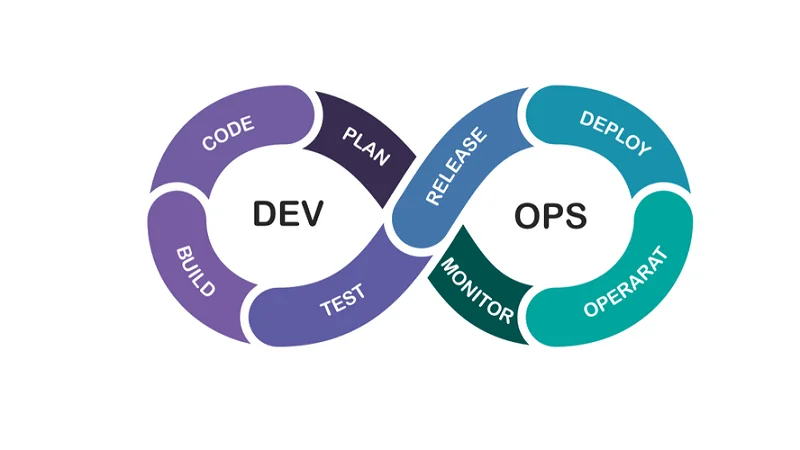It is useful when the system is anticipated to experience sudden spikes of person activity and, as a result, a drastic increase in workload demand. Leverage the facility of easy-to-use, scalable Droplets, Managed Kubernetes, and robust cloud storage options to effortlessly grow your digital infrastructure. Begin with DigitalOcean right now and scale with confidence, understanding your cloud environment is provided for success at each stage of your corporation development. Whereas the physical nature of hardware made scaling a slower course of, in the cloud, scalability is much more environment friendly and efficient. Scalability in cloud computing performs a big position in data management as it manages large volumes of knowledge in the cloud.
This method allows you to proactively expand your resources to fulfill rising demand, guaranteeing your techniques can deal with peak hundreds with out compromising performance. Choosing between scalability and elasticity in cloud computing largely depends on your business’s specific wants and circumstances. Both provide distinctive benefits and might considerably improve your computing capabilities, but your selection will depend upon elements like your demand patterns, progress projections, and budget. Here’s a more in-depth take a look at every possibility that will help you determine one of the best method for your company.
Despite these challenges, scalability provides benefits like higher control and customization. This method particularly appeals to organizations with specific needs, such as distinctive hardware configurations or stringent safety and compliance requirements. When deciding between scalability and elasticity, a quantity of elements come into play. This functionality alongside horizontal scaling, makes positive that your web site is classified with High Availability. This framework permits WordPress sites to push millions of views if not tons of of tens of millions.
The scaling happens on the software level, not necessarily on the hardware degree. Scalability refers to a system’s capacity to grow or contract at the infrastructure stage instead of at the assets stage (elasticity). This information will clarify what cloud elasticity is, why and the way it differs from scalability, and how elasticity is used. We’ll additionally cover specific examples and use cases, the advantages and limitations of cloud elasticity, and the way elasticity affects your cloud spend. Elasticity and scalability features operate resources in a method that retains the system’s efficiency smooth, both for operators and prospects.
Elasticity Vs Scalability In Cloud Computing: The Final Word
This permits websites to handle any unexpected surges in traffic at any given time, with no effects on efficiency. DigitalOcean supplies a complete cloud platform tailored for builders and companies seeking to attain scalability without the complexity that may accompany cloud infrastructure management. Unlike elasticity, which is about quick, typically momentary adjustments in capability, scalability focuses on the flexibility to develop steadily and preserve that development over time. DigitalOcean excels in this space by providing a suite of merchandise designed that will help you scale your operations smoothly and successfully. Cloud scalability solely adapts to the workload increase through the incremental provision of assets with out impacting the system’s overall efficiency.
With cloud computing, prospects only pay for the assets they use at any given time. Cloud elasticity proves cost-effective for any enterprise with dynamic workloads such as digital streaming services or e-commerce platforms. Cloud scalability is significant in rising performance by allowing companies to add extra sources or servers to meet growing calls for. Organizations can distribute the workload throughout multiple machines by scaling up or out, guaranteeing greater efficiency and improved person experience. While cloud elasticity offers the next degree of automation and useful resource administration, scalability nonetheless provides distinct advantages. Scalability provides companies more management over useful resource allocation and may be customized to specific requirements.
The Method Ahead For Scalability And Elasticity
The versatility is totally relying upon the local weather as once in a while it’d turn out to be negative attribute where execution of sure functions most likely ensured execution. An in-depth look at how companies develop cloud-native apps and the way low-code platforms might help. DATAMYTE additionally lets you conduct layered process audits, a high-frequency evaluation of critical process steps. Conducting LPA with DATAMYTE allows you to effectively identify and proper potential defects earlier than they turn into main quality issues.
- For elastic scaling, there’s additionally a pay-as-you-grow aspect that denotes the added resource growth for spikes, which, once they have handed, returns to the pay-as-you-go to be used mannequin.
- Elasticity ensures that assets could be quickly provisioned or deprovisioned to handle sudden bursts of exercise, maintaining performance without over-provisioning.
- However, it does have limitations when it comes to scalability and maximum capacity.
- With scale, it’s possible to overprovision and pay for computing resources that are not essential and stand idle.
- Elasticity offers your organization the agility to scale assets up or down in response to real-time demand, making certain you’re always conscious of market adjustments and buyer needs.
One key side of this definition is that it points out that elasticity depends on the function of scale. This integration guarantees a future where scalability is predictively proactive, minimizing the necessity for human intervention and letting know-how do the heavy lifting. Wrike is on the forefront of this innovation, integrating generative AI into our project management suite to offer a glimpse into the means forward for work administration. In this journey of planned growth, where every new customer, project, or knowledge byte could push your methods to their limits, a sturdy strategy is essential. Using the instance of our Pizzeria once more, you discover that several large subdivisions are being developed within a five-mile radius of your store and city.
Scaling Up
Conversely, during times of low demand, assets could be scaled down to reduce wastage and maintain efficiency. Serverless computing improves scalability and elasticity, simplifies operations, and reduces prices. With automatic scaling and real-time resource allocation, businesses can give consideration to their purposes with out worrying about infrastructure management.
Typically, scalability implies the utilization of one or many laptop sources, but the number is fastened, instead of being dynamic. Cloud elasticity does its job by providing the mandatory amount of resources as is required by the corresponding task at hand. This implies that your resources will each shrink or increase relying on the visitors your website’s getting. It’s especially useful for e-commerce duties, growth operations, software as a service, and areas the place resource demands constantly shift and alter. Elasticity also implies using dynamic and varied obtainable sources of laptop resources. With scalability, businesses can manually or automatically add resources as wanted, guaranteeing they don’t appear to be paying for unused cupboard space.
The objective is all the time to ensure these two metrics match up to ensure the system performs at its peak and cost-effectively. In the past, a system’s scalability relied on the company’s hardware, and thus, was severely restricted in resources. With the adoption of cloud computing, scalability has turn out cloud scalability and elasticity to be much more available and simpler. Cloud elasticity and scalability are amongst the integral parts of cloud computing. Despite its widespread use, there’s plenty of confusion relating to what’s doing what and how precisely.
While scalability and elasticity are carefully related, there is a subtle difference between the two. Scalability refers to dealing with varying workload calls for by adding or removing assets. Conversely, elasticity goes a step additional and refers to the automated and dynamic allocation of resources based on predefined guidelines or insurance policies. Elasticity is an important feature of cloud computing and allows for extra environment friendly useful resource administration. By implementing elastic scaling guidelines, businesses can ensure optimal efficiency and price efficiency. For instance, if an internet application experiences a sudden spike in traffic, the cloud infrastructure can routinely provision additional resources to accommodate the increased load.
Restaurant Analogy For Comparing Elasticity And Scalability Within The Cloud
It is often used when there are limitations to scale horizontally or when applications usually are not designed to run on multiple servers. A database server that’s upgraded with extra memory to handle larger datasets, with out including extra database servers, demonstrates vertical scalability. As companies continue to embrace building in the cloud, the flexibility to scale cloud assets with evolving calls for is crucial. Cloud scalability is extensively used to satisfy businesses’ dynamic and altering needs. It allows organizations to scale their sources up or down as required, helping them effectively manage workloads, guarantee performance, and control prices. A scalable cloud setting refers to an infrastructure that may increase or contract in response to altering demand.
This article will clarify what the distinction between scalability and elasticity in cloud computing. Companies that need scalability calculate the elevated sources they want, and plan for peak demand by adding to present infrastructure with those sources. With DATAMYTE, you may have an all-in-one answer for enhancing your organization’s scalability and elasticity in cloud computing. Contact us right now to learn more about our platform and how it might help take your corporation to the next stage. Typically, scalability is a long-term resolution best suited for businesses with regular, linear progress. It requires strategic planning and investment upfront but eliminates the chance of sudden demand spikes overwhelming your system.
Any Value Source, All In One View
Cloud elasticity lets you entry more resources when needed and launch them when they’re not wanted. Because these two phrases describe related occurrences, they’re often used interchangeably. But they aren’t interchangeable, and as such, should not be considered synonymous with each other. What they are is intertwined — as a result of an elastic cloud must concurrently be scalable up and out. The versatility is significant for mission basic or enterprise primary functions where any split the distinction within the exhibition may prompts huge enterprise misfortune. Thus, flexibility comes into picture the place additional belongings are provisioned for such software to fulfill the presentation stipulations.
This could be significantly useful in cases the place a system has a bottleneck that can be addressed by upgrading the prevailing machine. Both approaches have advantages and considerations depending on the system’s specific requirements. This feedback highlights the elasticity of Wrike in action, showcasing the means it adeptly supports the swift workflow essential to a company’s success.
If the user traffic dips throughout certain hours, elasticity scales down assets, conserving costs. When the site visitors picks up once more, elasticity scales up resources to maintain optimum performance. This stability between scalability and elasticity makes cloud platforms flexible and cost-effective, guaranteeing companies only pay for what they use. Scalability in cloud computing refers to a system or utility’s capability to handle an rising workload by including extra resources or nodes to the prevailing infrastructure. It permits companies to quickly scale up or scale out to satisfy the rising calls for with out hampering performance.
The distinctions between scalability and elasticity are crucial to understanding the optimal utilization of sources in cloud computing. Edge computing is anticipated to revolutionize scalability and elasticity in cloud computing by reducing latency and improving efficiency. By processing knowledge nearer to the source, edge computing eliminates the need for centralized cloud infrastructure, leading to lower prices and extra environment friendly resource allocation. Cloud scalability and cloud elasticity are often used interchangeably, but they differ. Scalability refers again to the ability to handle increased workloads by adding or eradicating sources, whereas elasticity refers to the automated provisioning and de-provisioning of sources based mostly on demand.
In distinction, cloud elasticity is in regards to the responsiveness of the cloud surroundings to instant, typically unpredictable, workload fluctuations. Elasticity ensures that assets could be quickly provisioned or deprovisioned to handle sudden bursts of exercise, sustaining efficiency without over-provisioning. While scalability focuses on long-term resource trends, elasticity is all about short-term, on-demand resource administration. In a scalable cloud surroundings, the infrastructure can mechanically provision further resources as wanted, such as storage, computing power, or community bandwidth.
Grow your business, transform and implement technologies based on artificial intelligence. https://www.globalcloudteam.com/ has a staff of experienced AI engineers.
امتیاز شما به این مطلب



